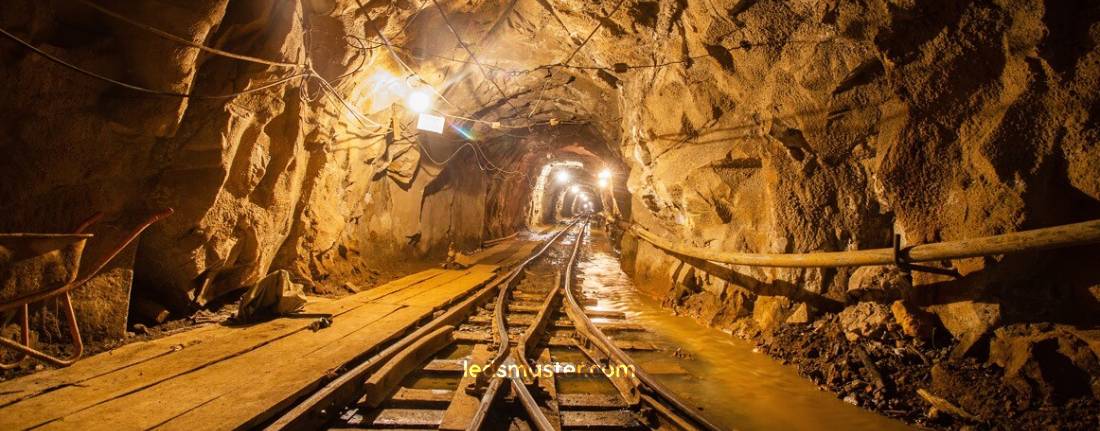Imagine a mining operation where the power of the sun not only lights the way but also cuts costs and reduces environmental impact. Explore how solar lighting is revolutionizing the way mines operate, offering a brighter future for both the industry and the planet.
Get your complimentary lighting design today
The mining industry has long faced challenges in balancing operational efficiency with environmental responsibilities. As the demand for sustainable practices increases, solar mining lighting has emerged as a viable solution. Harnessing the power of the sun, this technology not only reduces operational costs but also aligns with global efforts to promote renewable energy.
Table of Contents
ToggleAdopting solar mining lighting systems offers numerous advantages that extend beyond mere illumination. These systems represent a shift towards sustainable practices that can positively impact both the environment and the bottom line.
The mining sector has traditionally been associated with high energy consumption and substantial carbon emissions. Solar lighting systems mitigate these impacts by utilizing a renewable energy source. By replacing fossil fuel-based generators and conventional lighting with solar solutions, mines can significantly lower their carbon footprint. The reduction in greenhouse gas emissions contributes to a healthier environment and supports global initiatives aimed at combating climate change.

Initial investments in solar lighting systems may seem daunting, yet the long-term savings are considerable. By harnessing solar energy, mining operations can eliminate or greatly reduce their electricity costs. Once installed, solar lighting systems typically require minimal maintenance compared to traditional lighting solutions, further lowering operational expenses. Additionally, the longevity of solar technology means fewer replacements over time, leading to even greater savings.
Many mining operations are situated in remote areas where access to the electrical grid is limited or non-existent. Solar mining lighting offers a reliable power source that does not rely on external infrastructure. This independence allows mining companies to maintain operations without the complications associated with traditional power supply chains. With the ability to generate energy on-site, mines can enhance their operational resilience and ensure consistent lighting, regardless of grid instability.
The successful implementation of solar mining lighting requires careful planning and design. Various factors must be considered to ensure the system operates efficiently and meets the specific needs of mining activities.
Before deploying solar lighting systems, a thorough site assessment is crucial. This process involves evaluating sunlight exposure and considering seasonal variations that may affect energy generation. Different locations may receive varying amounts of sunlight throughout the year, which can impact the performance of solar panels. A detailed assessment helps in selecting the appropriate type and number of solar lights required for optimal performance.
Each area within a mine has distinct lighting needs based on its specific activities. For example, areas with heavy machinery may require higher lux levels to ensure visibility, while access roads may have different requirements. Accurate assessments allow for the design of a solar lighting system that provides adequate illumination where it is needed most.
Mining environments can be harsh, with equipment exposed to extreme weather conditions, dust, and potential physical impacts. Selecting solar lighting systems designed for durability is essential. High-quality materials that can withstand extreme temperatures, moisture, and physical wear ensure that the systems function effectively over time. Choosing lights with weather-resistant features can minimize maintenance needs and enhance the longevity of the installation.

Various solar lighting solutions are available to address the unique challenges faced by mining operations. Each type has its own set of features and applications, allowing mines to choose systems that best fit their specific needs.
Solar flood lights are versatile solutions commonly used in mining operations. These lights are designed to provide broad illumination, making them ideal for open-pit mines and large outdoor areas. With high lumen outputs, solar flood lights can effectively illuminate work sites, improving safety for workers during night operations. Their adjustable designs allow for easy positioning, and many models come equipped with motion sensors, further enhancing efficiency and energy savings.
For mines that require lighting along access roads and pathways, solar street lights offer an effective solution. These fixtures are designed to mimic traditional street lighting but operate on solar power. They provide consistent illumination for vehicles and pedestrians, enhancing safety in transit areas. Solar street lights can also be equipped with smart technology that adjusts brightness levels based on traffic flow, maximizing energy efficiency while ensuring adequate lighting.
In situations where temporary setups or emergency lighting is required, portable solar lighting systems are highly beneficial. These systems are lightweight and easy to transport, making them ideal for short-term projects or specific work areas. Portable solar lights can be deployed quickly and offer flexibility in use, adapting to various situations within mining operations. Their capability to function independently of the grid further enhances their practicality in remote locations.
While the benefits of solar mining lighting are clear, practical implementation can pose challenges. The transition from traditional lighting systems to solar solutions requires strategic planning and investment. Companies must conduct feasibility studies to assess the potential return on investment, considering both the initial installation costs and the long-term savings on energy.
One of the hurdles is the initial investment in solar technology. Although the cost of solar panels has decreased significantly over the years, the upfront expenditure can still be substantial. Companies must weigh this cost against future savings and consider financing options that can facilitate the transition. Government incentives for renewable energy adoption can also provide financial relief and make solar lighting systems more accessible.
Maintenance is another factor when considering solar mining lighting. While these systems typically require less maintenance than traditional lighting, regular inspections are necessary to ensure optimal performance. Dust accumulation on solar panels can hinder energy absorption, so periodic cleaning may be required. Additionally, battery health must be monitored to guarantee consistent operation, especially in environments where lighting is critical for safety.
Despite these maintenance requirements, the longevity of solar systems makes them an attractive option. Most solar panels come with warranties of 20 years or more, and the durable construction of solar lighting fixtures can withstand the demanding conditions of mining operations. This longevity contributes to the overall cost-effectiveness of solar lighting solutions.
Several mining operations have successfully adopted solar lighting solutions, showcasing the potential benefits of this technology. One notable example is a large open-pit mine in Australia that implemented solar flood lights to illuminate its extensive work areas. The project resulted in a 70% reduction in energy costs compared to their previous diesel generator system. The solar lights also provided better visibility for workers, enhancing safety during night operations.
Another case involved a mining site in South America that integrated solar street lights along its access roads. The mine faced challenges related to poor visibility, leading to accidents. After installing solar street lights, the number of incidents decreased significantly, demonstrating the impact of improved lighting on safety.
These case studies not only illustrate the effectiveness of solar lighting solutions but also serve as benchmarks for other mining operations considering similar transitions.
The transition to solar mining lighting represents a significant step forward for the industry. By leveraging renewable energy, mining operations can achieve greater sustainability, operational efficiency, and cost savings. As technology continues to evolve, the potential for solar lighting solutions will only increase, enabling mining companies to operate more responsibly while maintaining productivity. Embracing solar mining lighting is not just a response to current demands but a proactive strategy for a sustainable future in the mining sector.